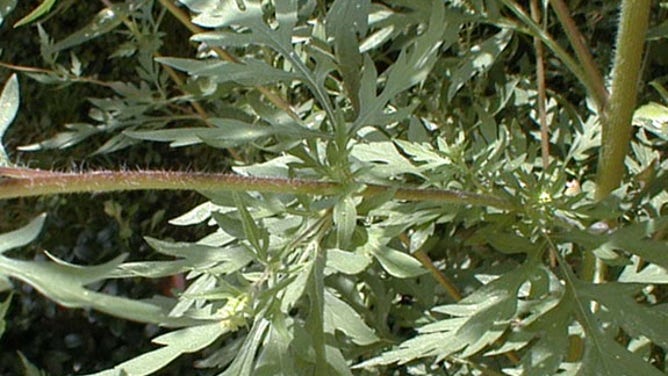Need pollen relief? Wish for frost
Ragweeds produce billions of pollen grains but cannot withstand cold weather.

A ragweed produces a billion pollen grains but cannot withstand frosty weather.
(Pennsylvania Department of Environmental Protection)
Still sniffling from fall pollen? Experts say the cold weather will provide relief for millions of Americans.
The Asthma and Allergy Foundation of America estimates around 50 million Americans suffer from allergies associated with one of the highest pollen producers, ragweed.
Hannah Jaffee, a research analyst with AAFA, says a single plant can produce a billion pollen grains, which travel hundreds of miles.
The flowering plants grow in every corner of the continental United States from late summer until the first frost.

Around 50% of the country has seen the first freeze of the season.
(FOX Weather)
Experts say their release of pollen typically slows when temperatures drop below 50°F, and a frosty morning will outright kill the plant.
According to weather observations, most of the U.S. has already seen overnight lows drop below the 50°F, and about half the country has reported its first freeze.
Typically by mid-November, more than 90 percent of the country has seen its first frost and the eventual demise of fall pollen season.

Most of the United States usually sees their first freeze by mid-November.
(FOX Weather)
The winter weather only provides a short reprieve from outdoor allergies.
AAFA warns that the spring pollen season can start in January, in the warm climate of the southern states, and last through July.
You can monitor local pollen counts through the National Allergy Bureau.